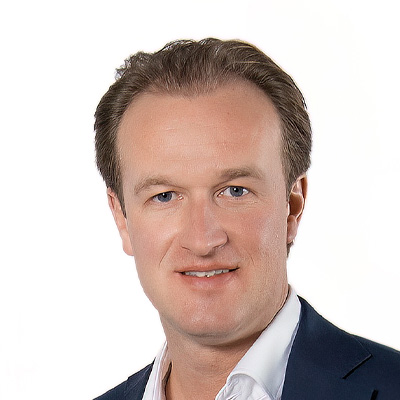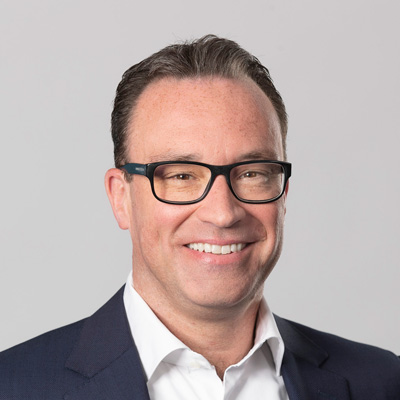INCREASING EFFICIENCY: A TRANSFORMATION PROGRAM SECURES FUTURE SUCCESS
Increasing efficiency according to plan for a European insurer
An efficiency enhancement program means a leading European insurer is set up for the future. This international company is taking steps to position itself for successful growth in a highly competitive market, and is relying on Horváth’s best-practice approach and industry experience in doing so. The first positive results of its business transformation are already evident.
From a position of strength and with an eye to the future, a leading European insurer embarked on a comprehensive efficiency improvement program. The focus was on corporate functions, group functions, all core processes, the project portfolio and material costs, which were to be optimized by purchasing in the home market.
The aim was to reduce primary costs, and to thereby close the efficiency gap between the company and the competition and eliminate cost disadvantages. The strategy was to enhance the insurer’s competitiveness in a changing market characterized by price pressure and potentially weak demand. Additionally, the company needed to be well presented as an attractive partner for brokers, agents and sales partners.
INCREASED EFFICIENCY THANKS TO HORVÁTH BEST PRACTICES
For this ambitious project the insurer commissioned external support from Horváth experts, after being impressed by the Horváth team’s experience in numerous successful cost efficiency projects in the industry as well as their best-practice approach. Consultants always adapt tried-and-tested methods to the individual requirements of customers.
As a starting point for the efficiency program, the consulting team developed a number of core beliefs from its external perspective and compared them with experiences from comparable projects. The central core beliefs included the following:
- Simplicity wins – simplicity drives customer satisfaction and cost efficiency
- Increasing efficiency is not a project, but a journey. The project is just the start of the journey. However, it was understood that the project had to consider the target structure to its conclusion, and also establish a positive continuation.
In addition, a Reason-Why phase helped to strategically situate the project’s sustainability and to pinpoint and establish guidelines for the “why now & if not” at the start of the project. This was a useful step which provided early guidance and created a fixed anchor point for the transformation process. Cost reduction is never enjoyable, so it’s important to obtain buy-in for an efficiency program.
Right from the start, the Horváth team involved all the insurer’s managers in the project in order to ensure they could support transparent communication throughout the organization. Doing this works to counteract the emergence of an informal “grapevine” and associated misgivings among employees. Together with the project managers in the company, the consultants developed communication measures for management teams and employees. Alongside continuous change management, this proved to be a success factor in the implementation of the program.
LEVERAGING OPTIMIZATION POTENTIAL ON A TARGETED BASIS

To identify levers for increasing efficiency, the Horváth team conducted benchmarking of the key functions and processes at the insurance company, drawing on extensive experience with corresponding projects and its own Operational Excellence Panels for this process. However, benchmarking can only reveal relative weaknesses as an indication compared to the competition. So the team also used Horváth’s tried-and-tested “counterflow method” to derive specific potential for optimization. This combines top-down benchmarking of KPIs for corporate functions and core processes with bottom-up validation of hypotheses for potential based on project experience. The combined approach contributed significantly to the acceptance and feasibility of the potential efficiencies determined.
These potentials were then transferred to concrete action plans and corresponding projects were set up for their implementation. Horváth supported the operational anchoring of the measures, enabling the insurer to quickly achieve its first positive results.
CONTINUOUS IMPROVEMENT ANCHORED IN THE CULTURE
The efficiency program marked the beginning of an important cultural evolution for the insurance company, towards greater efficiency and cost awareness. The team also set up a Future Work pilot project to sustainably align the organization for future growth. Its purpose is to identify and address further efficiency potential, and to realize it through targeted shop floor management.
Horváth worked with selected employees at the insurer to first develop the concept, methodology, and tools for the roll-out of Future Work in the entire organization. In addition, the consultants trained the insurer’s core team on a uniform toolbox (BPMN 2.0 modeling, value stream mapping, Turtle & SIPOC 5-W analysis & Ishikawa, etc.). The pilot project was extremely positive and inspired enthusiasm for a culture of workplace-based continuous improvement. The project is now being rolled out company-wide on the basis of the developed concept.
ACTIVELY HELPING TO SHAPE THE RIGHT PATH TO INCREASING EFFICIENCY
For an efficiency program to be successful and supported by the entire organization, stakeholders at all levels must be able to understand the purpose and objective of the project. They must also be convinced that the right steps are being taken to achieve it. This is ultimately dependent on the commitment of the management team. The decisive factor is that the management level is united behind the project and the upcoming changes, and leads by example in the implementation. Only then are employees at all levels prepared to accept the challenges ahead and to develop an attitude of commitment and continuous improvement.

Adopting change and communication measures which are level-appropriate, transparent and well-timed plays an important role in this. With this in mind, the consultants developed targeted formats for the continuous notification of all stakeholders. This not only created a high level of acceptance within the organization, but also increased willingness to actively engage with the challenges.
Among other methods, the team involved employees by means of short pulse-check surveys, moderated mid-term reviews, team meetings, and newsletters, and also provided comprehensive information about the project’s goals, measures, and progress. This made it possible for potential conflicts to be identified early on and countered accordingly.
TRANSFORMATION UNDER THEIR OWN STEAM
The efficiency improvement program was a complete success for the insurer. Horváth’s team of consultants helped the company to drive the transformation forward under its own steam and to firmly anchor the necessary attitude in the organization. A clear Reason-Why formulation, Horváth’s best-practice approach, the anchoring of future work and consistent change management once again proved to be factors for success.
A clear Reason-Why formulation, Horváth’s best-practice approach, the anchoring of future work and consistent change management once again proved to be factors for success.
Your Contact

Fabian Goretzki

Stefan Hiendlmeier

